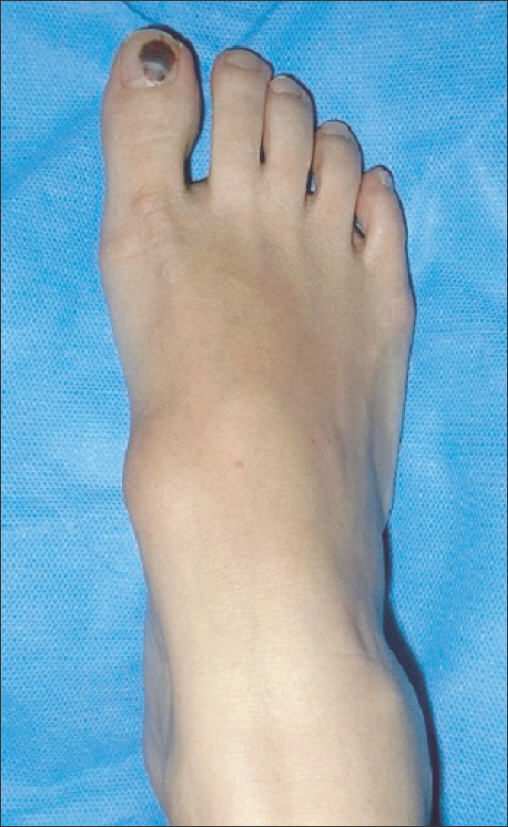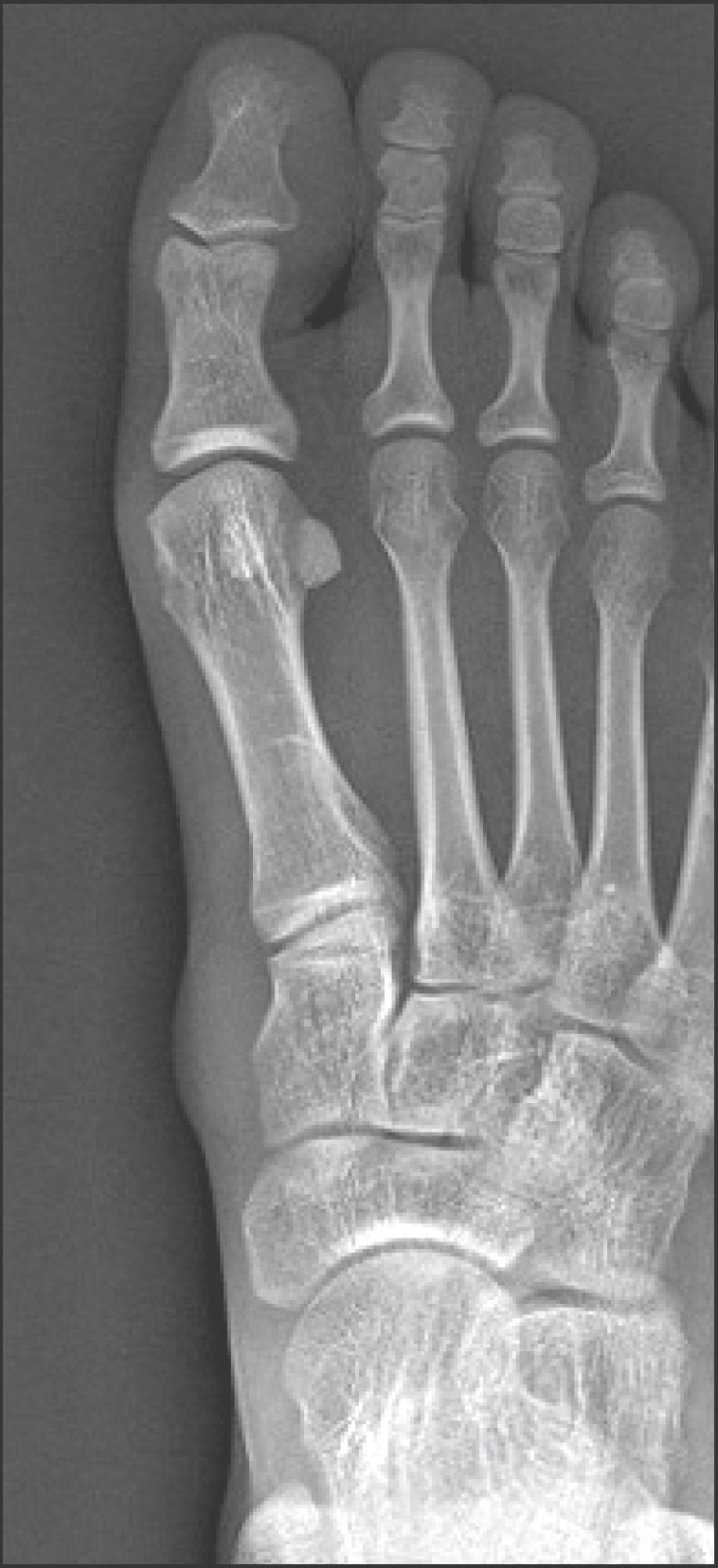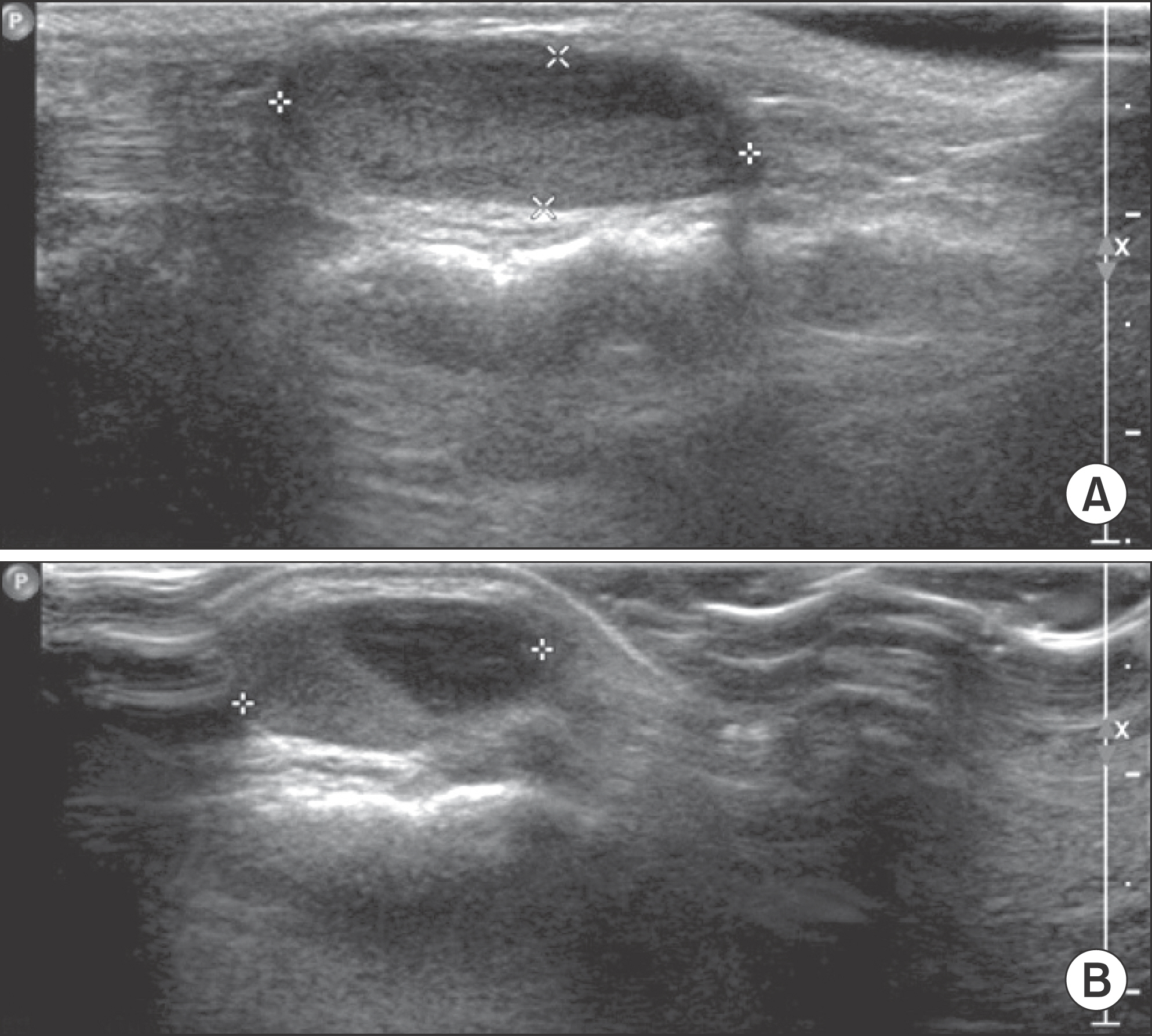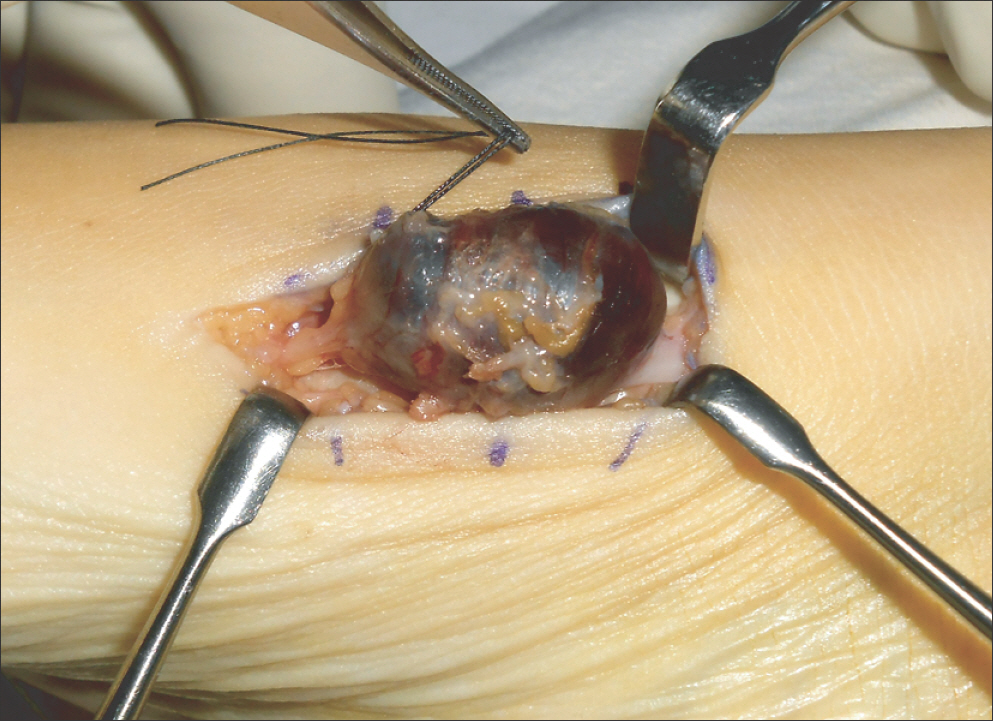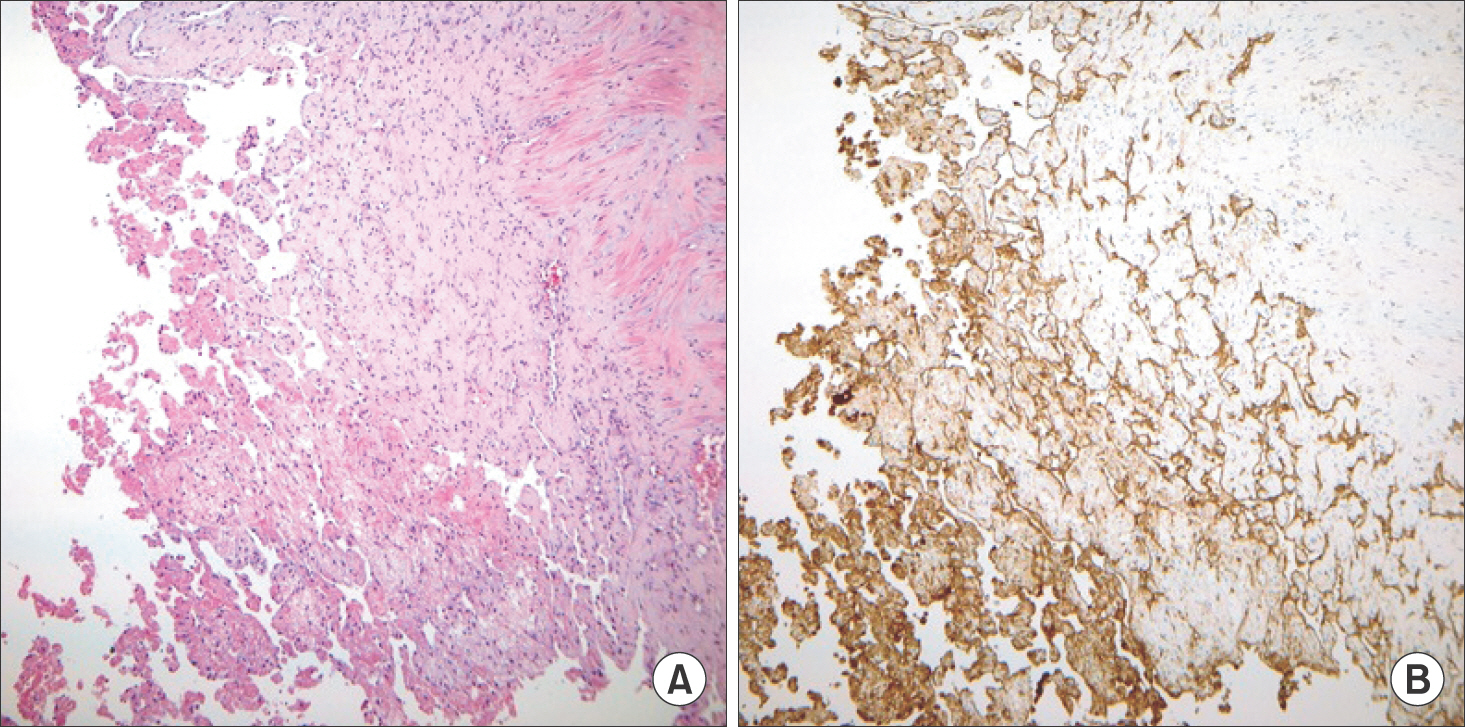J Korean Foot Ankle Soc.
2014 Sep;18(3):129-132. 10.14193/jkfas.2014.18.3.129.
Intravascular Papillary Endothelial Hyperplasia in Foot Adherent to a Saphenous Nerve Branch: A Case Report
- Affiliations
-
- 1Department of Orthopaedic Surgery, Dongguk University Ilsan Hospital, Dongguk University College of Medicine, Goyang, Korea. drlsh@hanmail.net
- KMID: 2333482
- DOI: http://doi.org/10.14193/jkfas.2014.18.3.129
Abstract
- Intravascular papillary endothelial hyperplasia (IPEH) has appeared in the literature under a variety of names, including Masson's tumor, Masson's hemangioma, and Masson's pseudoangiosarcoma. It is a benign lesion of the skin and subcutaneous tissue characterized by reactive proliferation of vascular endothelial cells with papillary formations. The clinical picture is not specific and the lesion resembles malignant angiosarcoma clinically and histopathologically. Therefore, it is often mistaken for angiosarcoma and a group of other benign and malignant vascular lesions. We report on a case of IPEH adherent to peripheral nerve treated with operative excision.
Keyword
MeSH Terms
Figure
Reference
-
1.Hashimoto H., Daimaru Y., Enjoji M. Intravascular papillary endothelial hyperplasia. A clinicopathologic study of 91 cases. Am J Dermatopathol. 1983. 5:539–46.2.Masson P. Hemangioendotheliome vegetant intravasculaire. Bull Soc Anat (Paris). 1923. 93:517–23.3.Fink B., Temple HT., Mizel MS. Intravascular papillary endothelial hyperplasia: a pseudotumor presenting on the plantar foot. Foot Ankle Int. 2003. 24:871–4.
Article4.Papagelopoulos PJ., Mavrogenis AF., Skarpidi E., Nikolaou I., Sou-cacos PN. A 56-year-old woman with a right arm mass. Clin Orthop Relat Res. 2008. 466:2892–8.
Article5.Miyamoto H., Nagatani T., Mohri S., Nakajima H. Intravascular papillary endothelial hyperplasia. Clin Exp Dermatol. 1988. 13:411–5.
Article6.Clearkin KP., Enzinger FM. Intravascular papillary endothelial hyperplasia. Arch Pathol Lab Med. 1976. 100:441–4.7.Amérigo J., Berry CL. Intravascular papillary endothelial hyperplasia in the skin and subcutaneous tissue. Virchows Arch A Pathol Anat Histol. 1980. 387:81–90.8.Lee SJ., Choo HJ., Park JS., Park YM., Eun CK., Hong SH, et al. Imaging findings of intravascular papillary endothelial hyperplasia presenting in extremities: correlation with pathological findings. Skeletal Radiol. 2010. 39:783–9.
Article9.Mestdagh H., Lecomte-Houcke M., Reyford H. Intraneural haemangioma of the posterior tibial nerve. J Bone Joint Surg Br. 1990. 72:323–4.
Article10.Lim R., Tay SC., Yam A. Intravascular papillary endothelial hyperplasia (Masson’s tumour) of the finger presenting as a digital nerve schwannoma. J Hand Surg Eur Vol. 2011. 36:612–3.
Article
- Full Text Links
- Actions
-
Cited
- CITED
-
- Close
- Share
- Similar articles
-
- Intravascular Papillary Endothelial Hyperplasia in Foot (A Case Report)
- A Case of Intravascular Papillary Endothelial Hyperplasia Developing on the Sole
- A Case of Intavascular Papillary Endothelial Hyperplasia on Dorsum of Tongue
- A Case of Intravascular Papillary Endothelial Hyperplasia on the Finger
- A Case of Intravascular Papillary Endothelial Hyperplasia on the Lip

